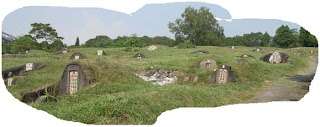
Every tanki, literally meaning “divining youth”, has his story of how the duty came to him. Some have received messages from the gods in their dreams after suffering from a major illness or accident. Others were suddenly possessed by a supernatural being one day, spoke in strange tongues they weren’t known to be able to speak and then convinced the people surrounding them that the gods have possessed them.
Most tend to describe the experience as something he hadn’t chosen – in fact many say that they have tried to “escape” from this onerous calling but fate nevertheless got hold of them and convinced them that they were the one chosen by the gods as an intermediary between the gods and their followers on Earth. However, there are some anthropologists argue that mediumship often bestow the individual with enormous, often unquestioned authority over the worshippers, not to mention benefits from donations and material offerings from the followers.
Even then, some studies show that whatever a tanki receives is out of free-will from the followers, at their absolute discretion. It is often said that many tankis live a rather ordinary life. They get enough to live, but hardly enough to lead a comfortable, wealthy existence. In fact, any tanki who leads an enviable lifestyle would have raised many suspicions about his character and piety.
Tankis hold court sometimes in temples, sometimes at their own homes. Many of them stay in HDB (Singapore government public housing) flats, and homes of the popular tankis often resemble mini temples or shrines, full of visiting worshippers over the weekends. They act as intermediaries with the gods or deities. They help to cure illnesses, or advise on careers, family problems, relationship issues, or in fact any human problem under the sun.
In short, the tankis provide help to the local community in resolving problems that neither the family, the mainstream organized religion, health authorities nor the state can resolve. Bizarre as it seems in a modern society like Singapore, folk Taoism, complete with mediums and the supernatural, flourishes. Ironically, with rising incomes and standard of living, this ancient religion is given an added impetus as its followers have more to spare for their beliefs.










































